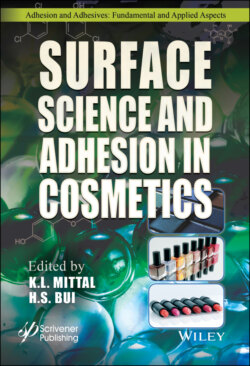Читать книгу Surface Science and Adhesion in Cosmetics - Группа авторов - Страница 74
3.5.4 Combinatorial Chemistry Technique Used to Mitigate Oxygen Inhibition for Low Energy UV-A Cure Resulting in Tack-Free Surfaces
ОглавлениеAs can be seen from above that oxygen inhibition is an issue that needs to be reconciled if one is going to cure UV nail gels. As was shown in Table 3.1 the increase of PI concentration can help override oxygen inhibition. However, Arceneaux does not mention the most efficient type of PI that should be used to obtain the maximum efficiency of the PI as well as overriding the oxygen inhibition issue [6]. Besides the PI issue, the types and variety of oligomers and monomers used in the formulations can have a dramatic effect on cure. Such a complex problem was essentially solved by researchers in the UV cure automotive refinish industry where the same issue was faced in developing a UV cure product using only UV-A light sources and formulations that could override the oxygen inhibition issues.
As can be seen in Table 3.2 a screening was done using 6 independent factors, namely UV curable resins, reactive diluents, PI, PI levels, irradiation time, and distance from the lamp. In this evaluation the so-called Edisonian method meets the combinatorial world of chemistry. In this analysis, over 15,000 coatings were evaluated looking for the sweet spot and synergistic effects between these 6 independent factors.
It is obvious from Figure 3.12 that the only way to obtain the full surface cure (and the minimization of oxygen inhibition) of a UV-A system is to run massive amounts of tests to see if a combination or synergistic effect can be found. Figure 3.12 x-axis shows the PI and PI combinations that were evaluated. Also in Figure 3.12 the y-axis shows the oligomers and oligomer combinations that were evaluated. In this test protocol the R2/R5 (oligomer) along with IRGACURE®819 showed a synergistic effect. Even though the test resins were evaluated in the past, the fact they cured as well as they did without surface tack (i.e. surface inhibition by oxygen) was a surprise. All of this testing was done on clear coatings followed by evaluation of pigment systems. The pigmented systems were evaluated at a P/B (Pigment to Binder ratio) = 0.8, ≤75 µm dry, 2 minutes under a 250 W UV-A lamp and 25 cm distance. The resultant primers had no surface tack and required no surface solvent wipe before the traditional sanding step.
Table 3.2 Factors and levels covered in the search for formulations exhibiting tack-free surfaces (due to oxygen inhibition) when UV cured using a low intensity 250 W UV-A lamp. The screening was done using the following 6 independent factors: UV curable resins, reactive diluents, PIs, PI levels, irradiation time and distance from lamp.
The development work also revealed in these papers [7, 8] that showed the development of a one-component (1K; komponente; Ger.) UV-A curable clear coat. Issues that these papers raised regarding developing this 1K UV-A curable clear coat are: 1) lack of flexibility in polymers based on radical polymerization, 2) keep the unreacted double bonds very low(≤10%) due to post-cure issues, 3) formulation and coating color due to visible light PI, and 4) primer, base coat and clear coat compatibility [7, 8].
Curing a UV nail gel with low wattage GA-FL or LED UV certainly needs more in-depth laboratory work as shown by these researchers [7, 8].
